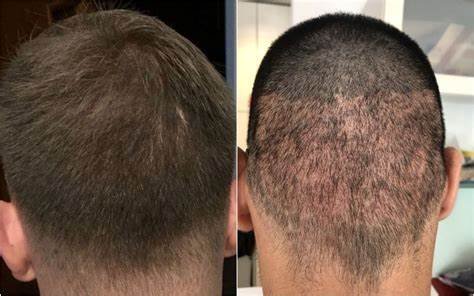Hair loss is an increasingly prevalent concern that impacts many individuals globally. So, addressing this issue, the Follicular Unit Extraction hair transplant technique emerges as an appealing avenue for individuals searching for effective remedies. By employing a minimally invasive methodology that delivers remarkable outcomes, this technique has catalysed significant advancements within hair restoration.
This article comprehensively explores the multitudinous advantages of this cutting-edge hair transplant approach.
Understanding the Technique
Follicular Unit Extraction, or FUE, involves transferring hair follicles from a healthy donor site—often the scalp’s back or sides—to a balding or thinning location. This method is known for its precision and the natural-looking results it produces. Unlike older hair transplant methods that involve removing a strip of scalp, FUE focuses on individual follicles, making them less invasive and more refined.
1. Minimally Invasive Procedure
One of the primary benefits is that the procedure is minimally invasive. Traditional transplant techniques, such as Follicular Unit Transplantation (FUT), involve cutting a strip of scalp from the donor area, which can lead to significant scarring and a more extended recovery period. In contrast, tiny punches are used to extract individual follicles, resulting in minimal scarring that is often undetectable. This approach expedites the healing process and dramatically decreases the likelihood of problems.
2. Natural-Looking Results
Achieving a natural appearance is crucial for anyone undergoing a transplant. It excels in this aspect because it allows for precise placement of each follicle, mimicking the natural growth pattern of your hair. To ensure the new hair mixes in perfectly with the old, the surgeon can meticulously plan the placement, orientation, and angle of the transplanted follicles. This meticulous approach leads to virtually indistinguishable results from natural growth.
3. Faster Recovery Time
Recovery time is a significant concern for individuals considering hair restoration. Because it is less invasive, the recovery period is shorter than that of traditional methods. Patients can resume their normal activities within a few days with only mild discomfort. The small, punch-like incisions heal quickly without stitches, and post-operative care is straightforward, involving simple guidelines to protect the newly transplanted hair.
4. Reduced Risk of Visible Scarring
Visible scarring can be a deterrent for many who are considering restoration. It minimises this concern with its innovative extraction technique. Since the procedure involves removing individual follicles with tiny punches, the resulting scars are small and scattered, making them much less noticeable than the linear scar left by FUT. The lack of a lengthy scar is a bonus for those who want shorter hairstyles.
5. Versatility for Various Hair Types and Areas
It is a versatile technique used in various types and body areas. While the scalp is the most common area for transplants, it can also restore hair on the eyebrows, beard, and chest. Because of its adaptability, it is an excellent choice for people who require restoration services. Additionally, it works well for both men and women, offering a solution for a wide range of hair loss patterns and degrees.
Choosing the Right Surgeon
A transplant’s success rate is directly proportional to the surgeon’s level of training and expertise. Choosing a qualified and reputable specialist with a proven track record in restoration is vital. During the consultation, patients should ask about the surgeon’s experience, view before-and-after photos of previous patients, and discuss their specific goals and expectations. With the help of a qualified surgeon, you can create a unique treatment plan and have reasonable expectations about the results.
From thinning to thriving, FUE hair transplants offer a highly effective solution for restoration. By minimising invasiveness and scarring while maximising natural-looking results, this technique has become a preferred choice for many. People can make better judgments on their restoration journey if they understand the procedure, recovery process, and long-term benefits. With the right surgeon and aftercare, thinning hair can transform into a thriving mane, restoring appearance and confidence.




